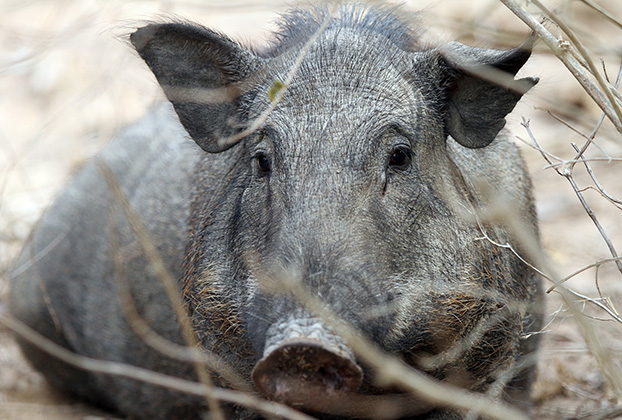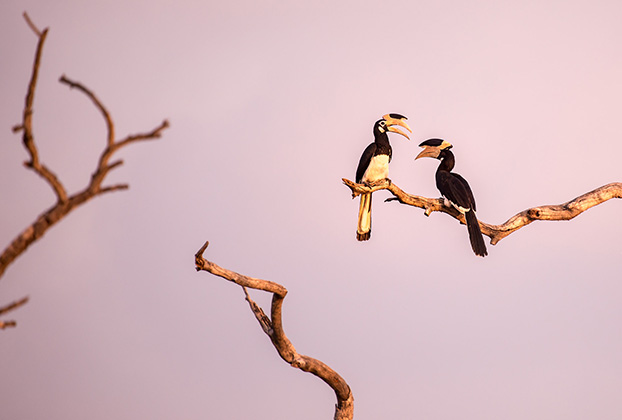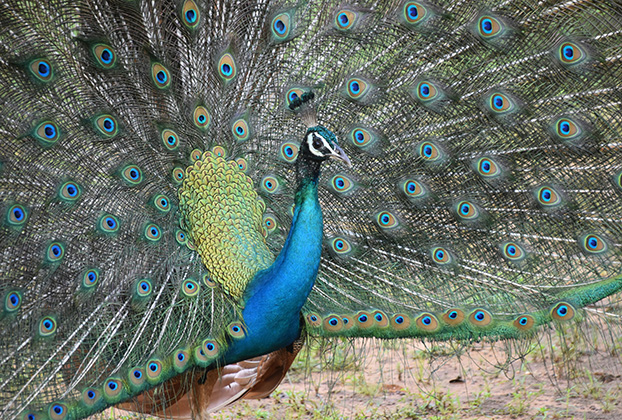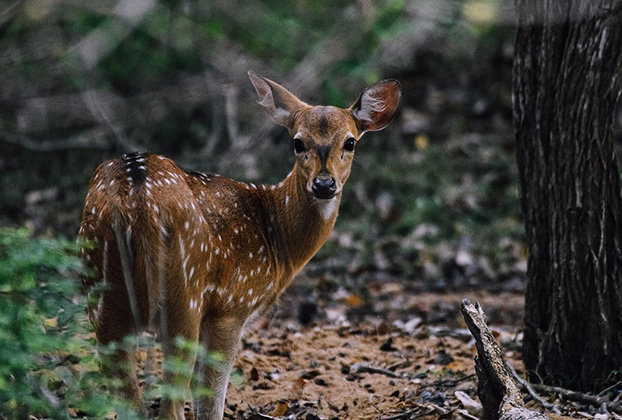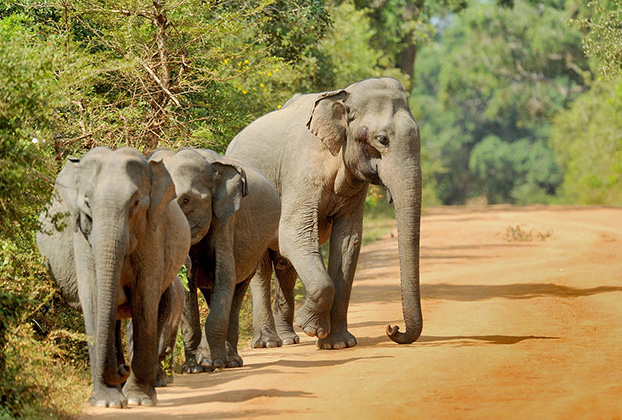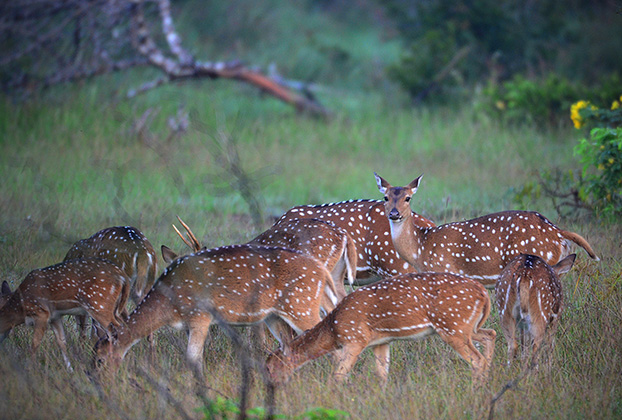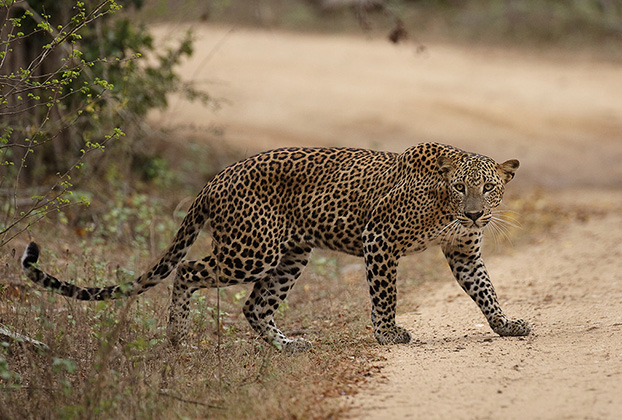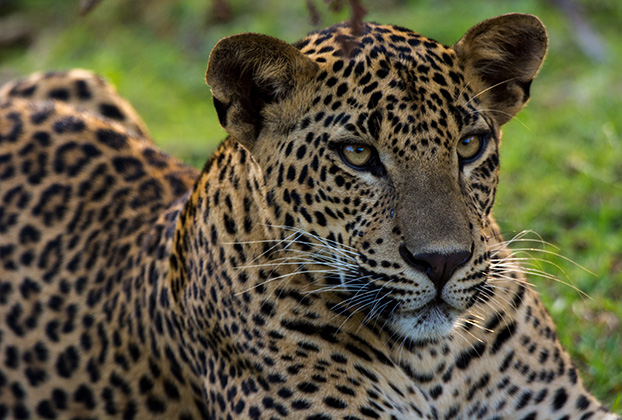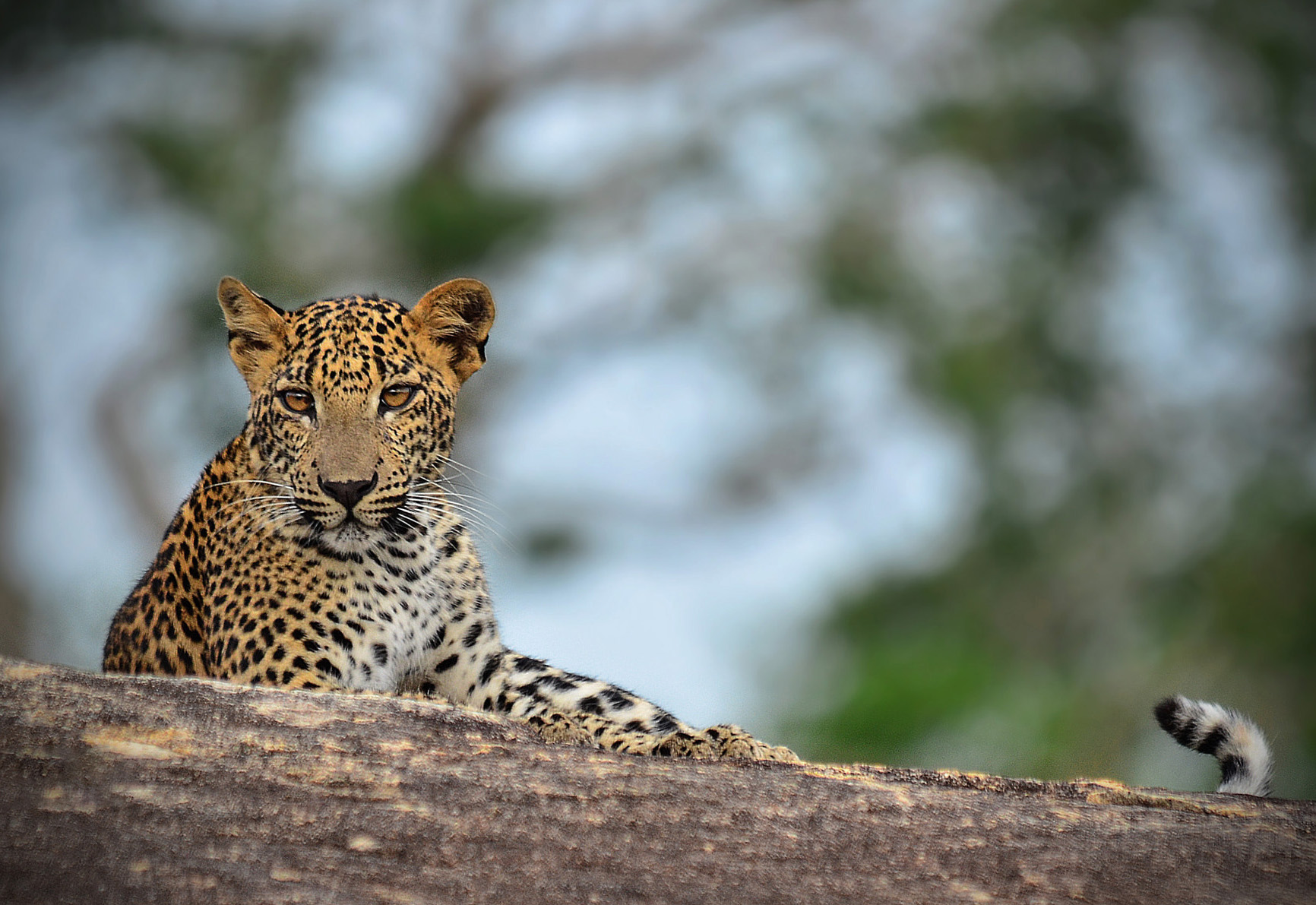
Yala National Park
Realm of the Leopard and Diverse Wildlife
Situated on Sri Lanka’s southeastern coast, Yala National Park is the island’s most famous and frequently visited wildlife sanctuary. Encompassing diverse ecosystems—from thorny scrub jungles and vast grasslands to freshwater wetlands and pristine coastal dunes—Yala offers a captivating safari experience. Established as a wildlife sanctuary in 1900 and a national park in 1938, it is pivotal to Sri Lanka’s conservation efforts and globally renowned for its exceptionally high density of leopards, making it one of the world’s premier spots to observe this elusive big cat in the wild.
A safari here is an exhilarating adventure as expert trackers guide open-jeep tours along dusty tracks through a rich tapestry of flora and fauna. Beyond leopards, Yala hosts healthy populations of elephants, sloth bears, wild buffalo, sambar deer, and crocodiles. Its varied habitats support over 215 bird species, delighting birdwatchers and photographers alike.
Yala is divided into several blocks, with Block 1 (Ruhunu National Park) the most popular and accessible, offering the best chances for leopard sightings. The park’s rugged beauty paired with wildlife thrills and the presence of ancient archaeological sites makes it an unforgettable destination for nature lovers.
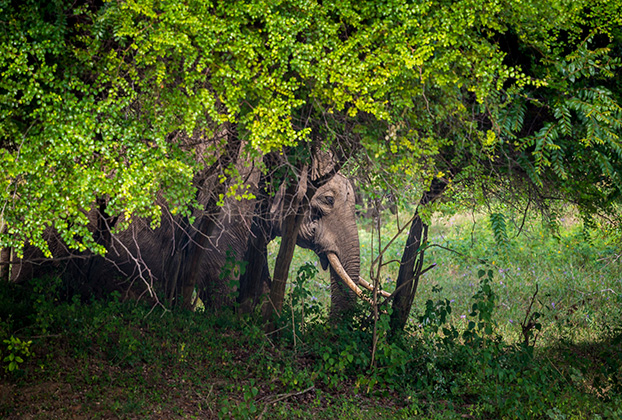
Top Things to See & Do
Leopard Spotting Safari
The crown jewel of Yala visits. Join a jeep safari with skilled drivers focusing on leopard hotspots. Sightings aren’t guaranteed but chances here are among the highest globally.
Elephant Encounters
Watch herds of Sri Lankan elephants grazing, bathing, and interacting naturally. Yala’s elephant population is significant, and sightings are frequent.
Bird Watching
With over 215 recorded bird species, Yala is a birdwatcher’s paradise. Spot majestic raptors like the White-bellied Sea Eagle, colorful bee-eaters, hornbills, and diverse waterfowl.
Photography
From sweeping landscapes to intimate wildlife moments, Yala offers endless opportunities for stunning nature photography.
Getting to Yala from Colombo
By Car / Private Transfer (Most Convenient):
From Colombo (CMB Airport) — about 260 km, 4.5–5.5 hours via Southern Expressway.
From Ella/Bandarawela — approx. 2–3 hours (90–110 km).
From Mirissa/Galle — approx. 3–4 hours.By Bus (Budget-Friendly):
Direct buses run from Colombo’s Bastian Mawatha Bus Terminal to Tissamaharama (6–7 hours).
Frequent buses from Ella/Bandarawela to Tissamaharama or Kataragama (2.5–3.5 hours). Safari jeep rides from Tissamaharama to the park entrance are necessary.By Train + Bus/Tuk-tuk (Scenic Option):
Nearest train station on main southern line is Beliatta; from there, take a bus or tuk-tuk (~1 hour) to Tissamaharama. From Ella, take the train to Ella station and then a bus or taxi/tuk-tuk to Tissamaharama.
Best Time to Visit
Yala lies in Sri Lanka’s dry zone, experiencing consistently warm temperatures between 28°C and 34°C (82°F to 93°F) with distinct wet and dry seasons affecting wildlife visibility.
February to April: Peak Season & Optimal Sightings
Driest months cause water to concentrate in fewer watering holes, drawing wildlife closer and increasing sighting chances. Expect abundant sun, low humidity, and excellent safari conditions. This is peak tourist season with higher jeep traffic.June to September: Good Wildlife Viewing & Elephant Gathering
Though receiving some light, intermittent showers, this period still offers good sightings. Lower water levels cause elephants to congregate in larger groups, akin to famous gatherings in nearby parks.May & October to December: Wettest Periods & Park Closures
These months bring heavier rains, muddy tracks, and dispersed wildlife due to abundant water. Yala Block 1 typically closes for maintenance for several weeks (usually September/October). Always verify current closure dates before planning your trip.
Local Tips & Insights
Morning Safaris are Best: Start early (5:30–6:00 AM) to see active wildlife like leopards and avoid midday heat. Afternoon safaris (from 2:30 PM) are also productive.
Sun Protection: Wear wide-brim hats, sunglasses, and high-SPF sunscreen.
Clothing: Choose light, breathable, neutral-colored attire (khaki, olive) to blend with surroundings.
Hydration: Bring plenty of water.
Binoculars & Camera: Essential for distant wildlife views and capturing memories; telephoto lenses are highly recommended.
Prepare for Dust: Use scarves or bandanas to protect your face and safeguard camera gear.
Patience Pays Off: Wildlife sightings require calm and patience—enjoy the experience.

